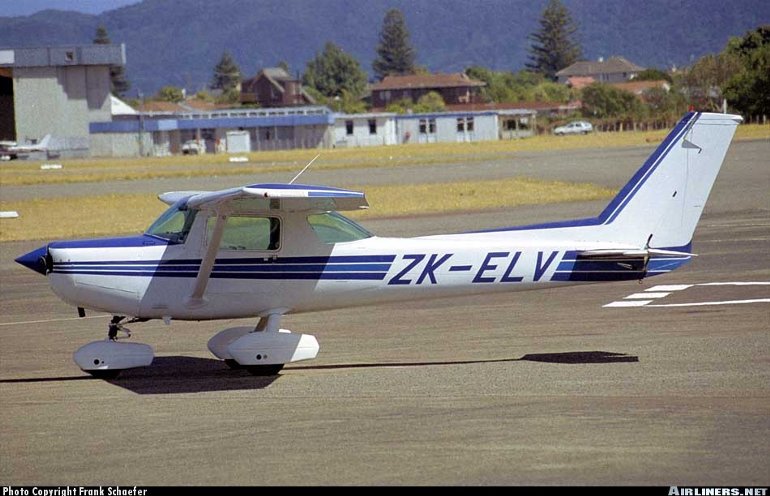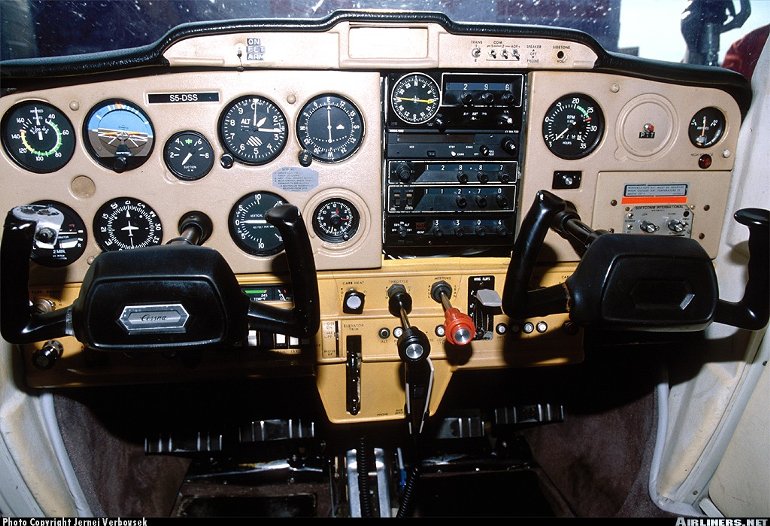Aircraft Technical Data
Cessna 150 & 152


| Details | |
| Country of Origin | United States of America |
| Type | Two seat primary and aerobatic capable trainer |
| History | The introduction of the Cessna 150 marked Cessna's return to the two seat trainer market after a six year absence and resulted in the most prolific and successful two seat trainer line in history. Development of the original 150 began in the mid 1950s, resulting in a first flight in September 1957. This modern, all new aircraft followed the Cessna conventions then gaining favour of a strut braced high wing, all metal construction and tricycle undercarriage. Production began in September 1958. What followed was a continuous process of product improvement, although throughout the 150 model life the Continental O-200A powerplant remained unchanged. One of the most significant model changes was the 150D of 1964 which introduced the wraparound rear window. Most versions were built in Standard, Commuter and Trainer forms with differing equipment levels, while licence production was undertaken in France by Reims and in Argentina by DINFIA. Aerobat versions were stressed for limited aerobatic work. The 152 was a response to availability problems with 80/87 octane fuel, and used the 150's fuselage coupled with a Lycoming O-235 running on 100 Octane. The 152 replaced the 150 from 1977 and remained in production until late 1985. It too was progressively updated, offered in A152 Aerobat form, and also built in France. |
| Powerplants | 150 - One 75kW (100hp) Continental O-200A flat four piston engine driving a two blade fixed pitch prop. A152 Aerobat - One 80kW (108hp) Lycoming O-235-N2C. |
| Performance | 150 - Max speed 200km/h (108kt), optimum cruising speed 196km/h (106kt). Initial rate of climb 640ft/min. Service ceiling 15,300ft. Range 563km (304nm). 150M - Max speed 201km/h (109kt), max cruising speed 196km/h (106kt), economical cruising speed 159km/h (86kt). Initial rate of climb 670ft/min. Service ceiling 12,250ft. Max range with no reserves 909km (490nm), or 1424km (769nm) with optional fuel. A152 - Max speed 200km/h (108kt), cruising speed 195km/h (105kt). Initial rate of climb 715ft/min. Range 575km (310nm). |
| Weights | 150 - Empty 447kg (985lb), max takeoff 681kg (1500lb). 150M - Empty 458kg (1010lb), max takeoff 726kg (1600lb). A152 - Empty 513kg (1131lb), max takeoff 760kg (1675lb). |
| Dimensions | 150 - Wing span 10.17m (33ft 4in), length 6.56m (21ft 6in), height 2.11m (6ft 11in). Wing area 14.8m2 (159.5sq ft). 150M - Wing span 10.21m (33ft 6in), length 6.58m (21ft 7in), height 2.39m (7ft 10in). Wing area 14.6m2 (157sq ft). A152 - Wing span 10.17m (33ft 4in), length 7.25m (24ft 1in), height 2.59m (8ft 6in). Wing area 14.9m2 (160sq ft). |
| Capacity | Typical seating for two side by side. |
| Production | Total 150 and 152 production amounts to 31,289 aircraft over 27 years, comprising 6860 US built 152s, 589 French built 152s, 22,082 US built 150s and 1758 French built 150s, and 39 Argentinian built A-150s. |
| Related Links | Cessna 150 & 152 |
The backbone of this section is from the The International Directory of Civil Aircraft by Gerard Frawley and used with permission. To get your own copy of the book click here. |
|








